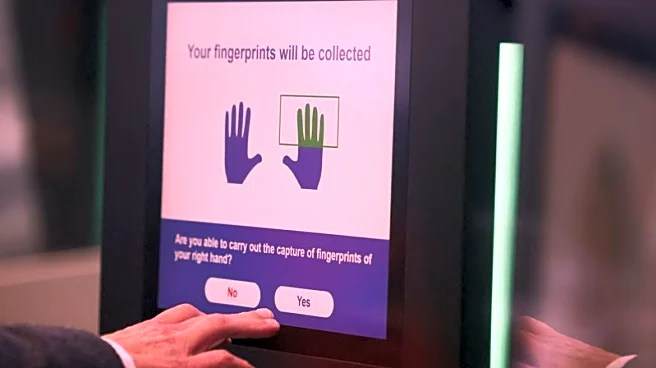What's Happening?
The European Union has launched its new biometric Entry/Exit System (EES) on October 12, 2025, which requires non-EU travelers to provide fingerprints and facial photos when entering the Schengen area, comprising 29 countries. This system aims to enhance security, combat identity fraud, and streamline border crossings. The EES will gradually replace traditional passport stamps and is expected to be fully implemented by April 2026. EU citizens and residents are exempt from this requirement as their biometric data is already on record. The system will track cross-border movements and ensure visitors do not overstay their permitted duration in the EU.
Why It's Important?
The implementation of the EES is significant as it represents a major shift in how the EU manages border security and immigration. By collecting biometric data, the EU aims to reduce crime and illegal cross-border movement, while ensuring compliance with stay limits. This system aligns with practices in other countries, including the U.S., and reflects a growing trend towards using technology for border management. The EES could impact travel patterns, potentially causing initial delays but ultimately streamlining the process. It also raises privacy concerns regarding the handling and storage of biometric data.
What's Next?
The rollout of the EES will be staggered, with each member state deciding on implementation specifics. By April 2026, all travelers entering the Schengen area will be registered in the system. The EU plans to launch an information campaign to educate travelers about the new system. Additionally, the EU is preparing to introduce ETIAS, a pre-travel visa waiver similar to the U.S. ESTA, expected by the end of next year. This will further change the landscape of travel to the EU, requiring travelers to adapt to new procedures.
Beyond the Headlines
The introduction of the EES may have broader implications for privacy and data protection standards in the EU. As biometric data becomes integral to border security, the EU must ensure robust safeguards to protect personal information. This development could influence global standards for biometric data use, prompting discussions on ethical and legal considerations. The system's success may encourage other regions to adopt similar measures, potentially leading to a more interconnected global approach to border management.











